High-Speed Video Clips from the 2012 NLCS and World Series
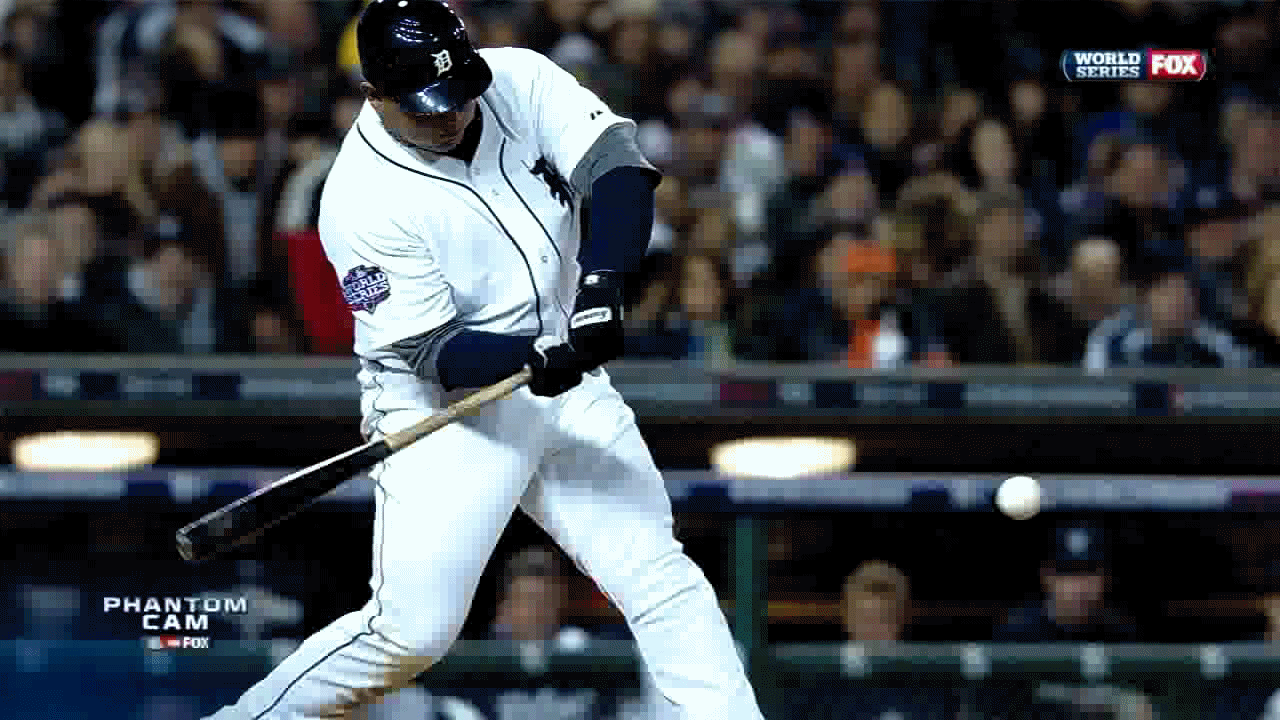
The above clip is taken from the 2012 World Series, Game 3, bottom of the 8th inning. The Tigers Miguel Cabrera is batting against the Giants Tim Lincecum and hits a weak grounder to 2B. In the process, he breaks his bat. But the really interesting thing is the fate of the broken bat. Click here to read about my analysis.
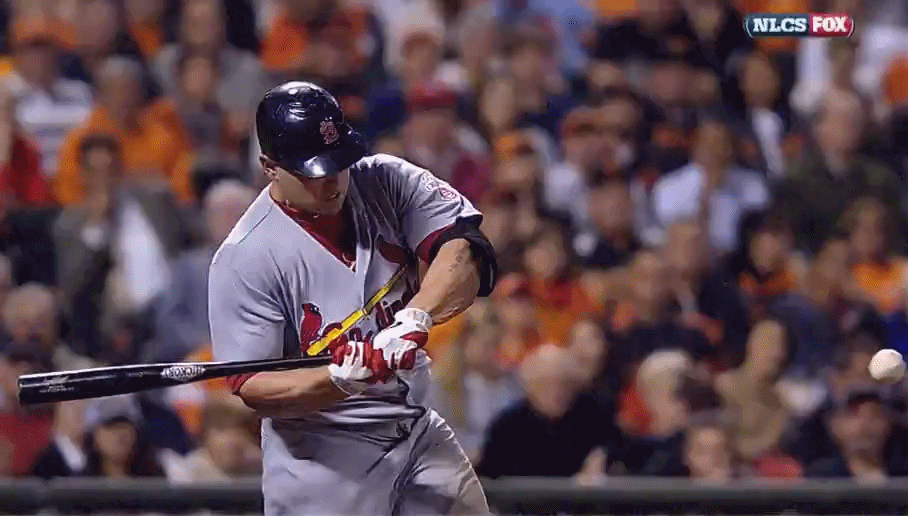
The above clip from NLCS, Game 2 shows Matt Holliday hitting the very bottom of the baseball, resulting in a popup with rapid backspin. It is precisely these kinds of conditions--a rapidly spinning, towering popup--that often result in a "paradoxical popup"
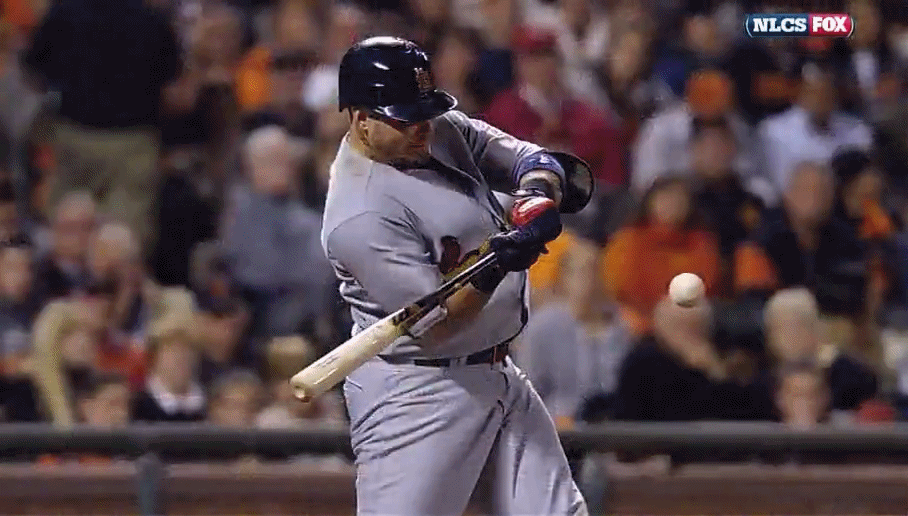
The above clip from NLCS, Game 2 shows Yadier Molina hitting the ball near the center of the bat, which is close to the location where the lowest vibrational mode of the bat is largest. As a result, the ball-bat collision excites vibrations in the bat in a major way. Unlike the previous clip, the ball meets the bat near the top of the ball, resulting in a topspin grounder.
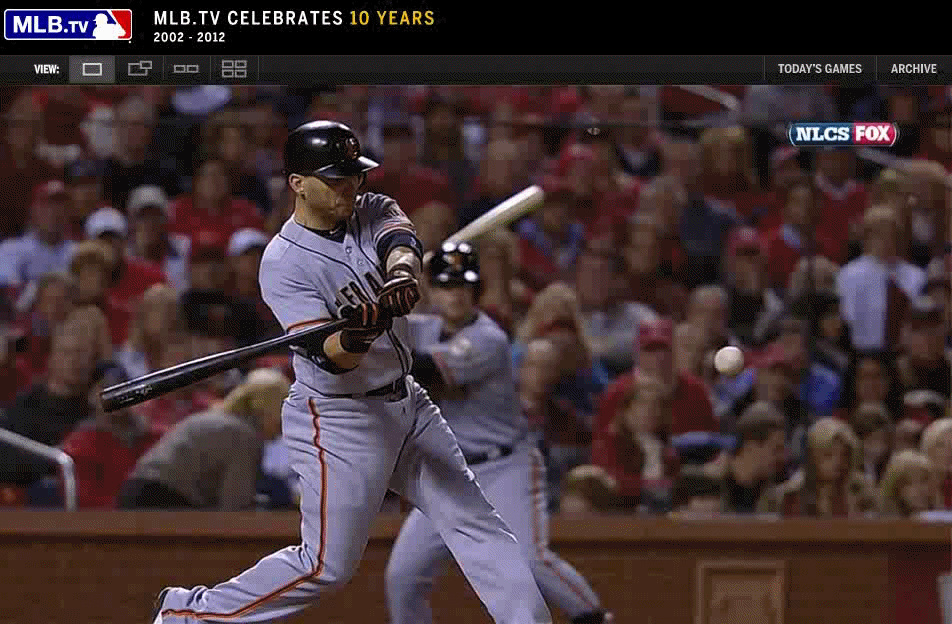
The above clip from NLCS, Game 4 shows Marco Scutaro hitting the ball right near the tip of the barrel. The amplitude of the resulting vibration is so large that the bat breaks and the ball weakly dribbles off the bat. Note that the bat splinters toward the pitcher. The reason is that when the ball hits the barrel tip, the barrel of the bat bends backward toward the catcher and the center of the bat bulges forward toward the pitcher. That is the natural shape of the fundamental vibrational mode of the bat. Since the fracture occurs near the center which is bulging outward, that is how the bat splinters, as the wood fibers on the pitcher side of the bat are stretched to the breaking point. If the ball had impacted the bat near the center, the center would have bulged toward the catcher, as in the Yadier Molina clip. See the next clip, where the ball does impact near the center of the bat and the bat splinters toward the catcher.
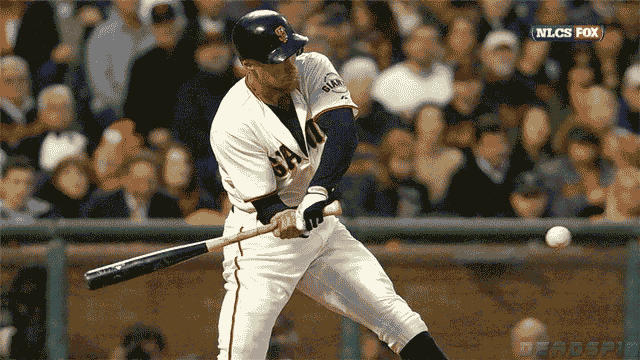
The above clip from NLCS, Game 7 shows Hunter Pence hitting the ball right near the center of the barrel. Note how the bat breaks, splintering toward the catcher, exactly the opposite of the previous clip from Scutaro broken bat. A more complete analysis can be found here.
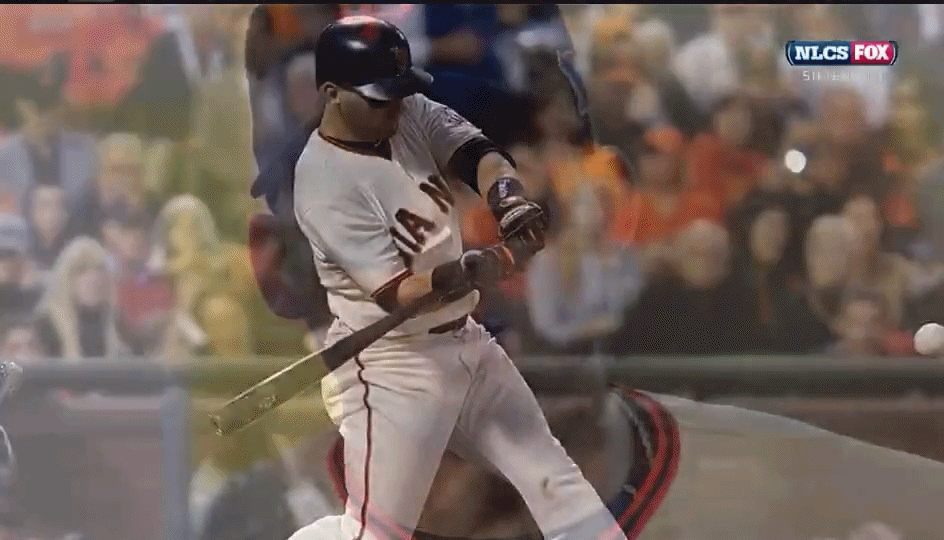
The above clip from NLCS, Game 2 shows Marco Scutaro hitting a base-clearing single/error right on the sweet spot of the bat. Consequently, there is no vibration after the collision. The bat continues to move forward, albeit at lower speed. The lower speed is the result of momentum conservation. The bat transferred momentum to the ball by turning it around. Therefore the ball must transfer an equal and opposite momentum to the bat, slowing it down. This is the same as the recoil effect when firing a rifle. Also note that Scutaro "squared up" perfectly on this hit, with the bat impacting the center of the ball. As a result, the trajectory of the batted ball is a line drive at at an upward launch angle only slightly larger than the incoming downward angle of the pitch. And the outgoing ball has no spin, which again is the result of squaring up.
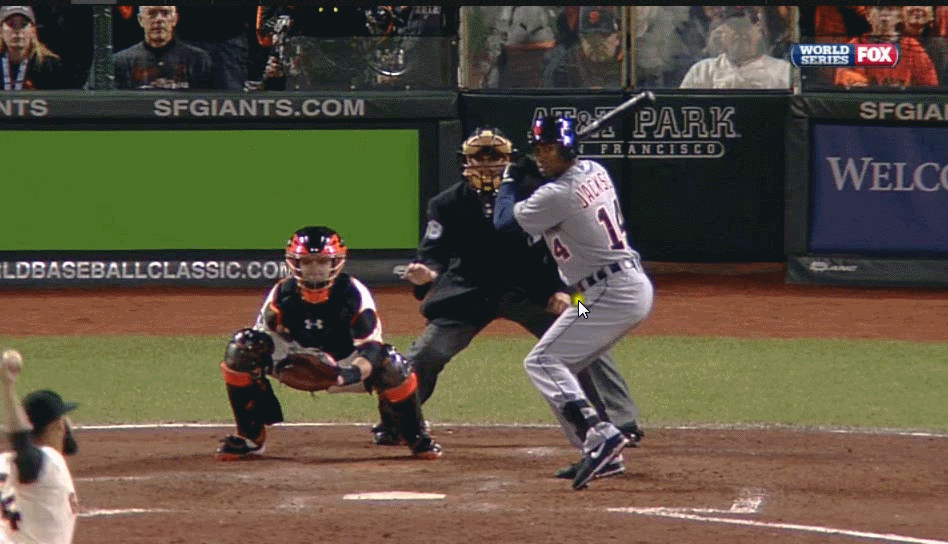
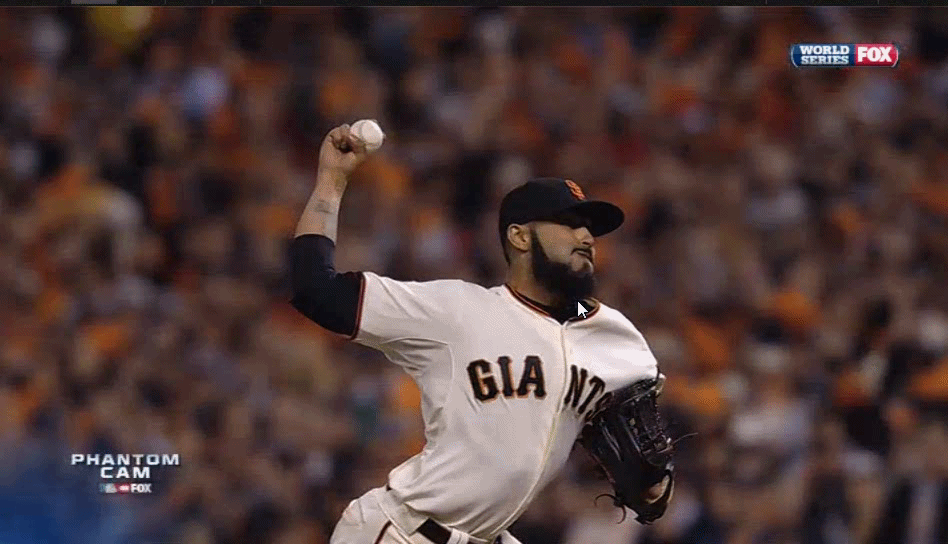
Another example are the two clips shown above, which come from World Series, Game 2. WIth one out in the bottom of the 9th, Giants closer Sergio Romo throws a wicked 79 mph slider to the Tigers Austin Jackson. The top clip shows that Jackson was badly fooled on the pitch, which broke horizontally by over one foot! The bottom clip shows Romo's release in slow motion.



